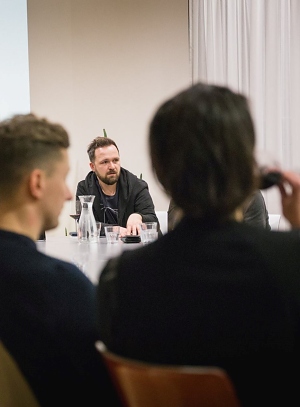
Young architects in Brno dislike the absence of open competitions
 |
The members of the group want to bring the topic of quality architecture into public discourse. They plan to reach out to all political parties before the elections to find out what stance they will take in the creation of public buildings and spaces, said Kurtis, who is a candidate for the city council for Žít Brno. According to Radka Loukotová from the press department of the magistrate, there are many more architectural competitions than before. "For comparison, between 2010 and 2014, no competitions were announced," wrote ČTK.
The mentioned buildings that the city intends to construct in the coming years include an athletics hall for 450 million, an extension of the Lužánky swimming stadium for 93 million, a velodrome costing 300 to 600 million, an ice hockey hall for 1.4 billion, a football stadium for two billion, a new pavilion at the exhibition center for half a billion, and an entrance to the zoo for 300 million. "The project for the new centralized town hall is also problematic. The city purchased a finished project called CD Palace, which was designed 20 years ago, and just wants to make some minor adjustments. The town hall is a symbol of secular power and should be a representative building," Kurtis said. Loukotová did not specify why the city did not announce competitions for these constructions and added that the city would comment on individual projects later.
According to architects, the advantage of open international competitions is the possibility of obtaining a number of top-notch designs that consider not only quality architecture but also construction and operational costs. "If we want to continue the tradition of quality functionalist architecture in Brno, we need to start with the way the project is commissioned and designed. A quality design can save substantial money at all stages from preparation to operation," Kurtis said.
Quality public architecture, according to architects, sets standards for private investors as well. "There are many bad examples, some of which Brno cannot even be blamed for, such as the Justice Palace or the Employment Office on Herschpická," Kurtis said. He also mentioned the current reconstruction of Dominican Square, which is ultimately only being repaved and discussions are still ongoing regarding what will be done there.
Open competitions have been exceptional in Brno and have rarely come to fruition. These include the new train station under Petrov, the new design of Moravské náměstí, the revitalization of the Svratka riverbank, and the new housing estate Kaménky in Černovice. "Good implemented examples are Slovanské náměstí, Zelný trh, and the Reduta theater," said Kurtis. According to Loukotová, the number of competitions has significantly increased since the establishment of the Office of the Architect of the City of Brno. "In two years, there have been four competitions, of which two are open and two are narrower. The narrower ones involve a few selected architects being approached, and others can join," Loukotová stated. Some other competitions are currently ongoing and being prepared.
The Office of the Architect of the City of Brno also conducts so-called invited competitions. "That is a problem. They only approach selected architects, so there is no opportunity for more quality ideas to come together," Kurtis noted.
The city usually argues that this would cause significant delays, but it is typically only a year at most. The second argument is appeals by architects and further delays in preparation. "But if the competition is well-prepared, no one appeals," Kurtis believes.
The English translation is powered by AI tool. Switch to Czech to view the original text source.
0 comments
add comment
Related articles
2
04.08.2021 | The swimming pool behind Lužánky in Brno will be built by Metrostav for 250 million
0
29.07.2020 | The multifunctional hall in Brno should have building permission in January
0
28.01.2020 | Brno has a study on the design of a multifunctional hall where Kometa will play
0
04.09.2018 | Brno approved a shareholder loan of 350 million CZK to the Exhibition Grounds
0
28.08.2018 | Brno wants to build a central magistrate for all 1100 officials
0
11.07.2018 | Brno has selected a company that will develop a study for the construction of a velodrome
0
23.04.2018 | The hockey hall for Kometa for 1.4 billion will be built at the exhibition center
0
17.04.2018 | A new pavilion will be built at the Brno Exhibition Centre for 400 million
2
16.02.2018 | Open Letter to the Director of the Office of the City Architect of Brno
0
15.11.2017 | The swimming stadium in Brno will have a wellness area for 15 million
2
04.10.2016 | Brno has approved the preparation of a study for the construction of an athletic hall
1
10.11.2015 | In Brno, an athletic hall will be built for 350 million without a competition
0
19.07.2012 | Zoo Brno has received approval for the construction of a new entrance area











